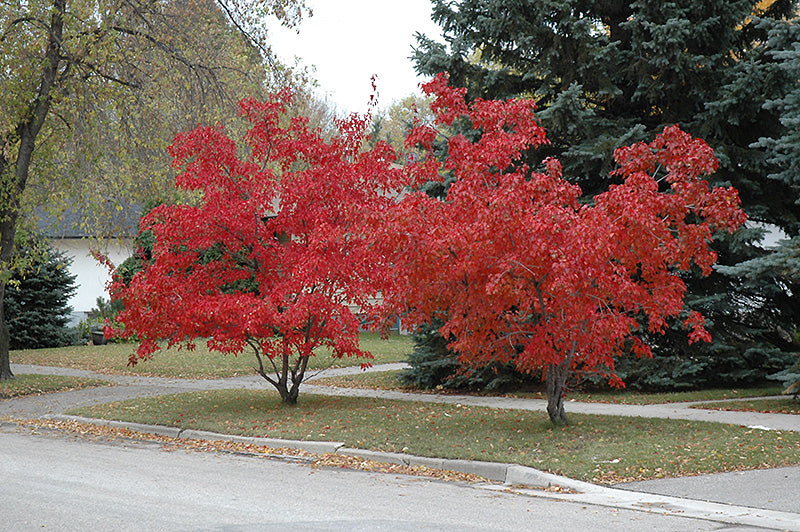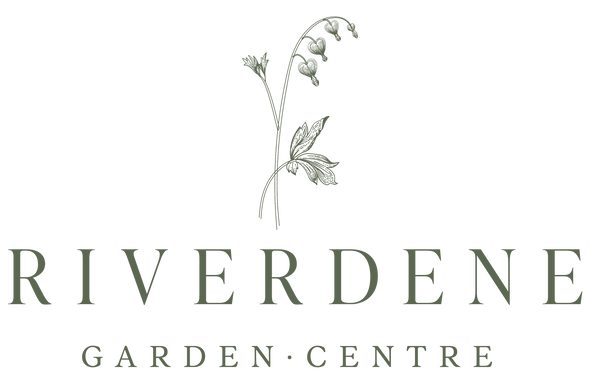Riverdene Garden Center
Amur Maple
Amur Maple
Couldn't load pickup availability
Acer ginnala
Amur Maple is a hardy, compact, multi-stemmed or single-trunked ornamental tree known for its brilliant red-orange fall color, fragrant spring flowers, and adaptability. It is cold-hardy (Zone 2-7), drought-tolerant, and well-suited for prairie climates, making it a great choice for Southwest Saskatchewan. It can be grown as a small tree or large shrub, and it’s often used for hedges, windbreaks, or specimen plantings.
Planting & Location
- Hardiness Zone: 2-7 (extremely cold-hardy)
-
Mature Size:
- Tree Form: 15-20 feet tall, 15-20 feet wide
- Shrub Form: 10-15 feet tall, 10-15 feet wide
- Growth Rate: Moderate (12-24 inches per year)
- Sunlight Needs: Full sun to partial shade (best fall color in full sun)
-
Soil Preference:
- Adaptable to loamy, sandy, and clay soils.
- Tolerates slightly acidic to alkaline soils (pH 5.5-8.0).
- Prefers well-drained soil but tolerates periodic drought.
-
Spacing:
- 15-20 feet apart for individual trees.
- 3-5 feet apart for a hedge or windbreak.
Watering
- Young Trees (First 2-3 Years): Water deeply once per week to establish roots.
- Established Trees: Drought-tolerant; water every 2-3 weeks in dry periods.
- Avoid Overwatering: Prefers moderate soil moisture but does not tolerate standing water.
Fertilizing
- First Year: No fertilizer needed—focus on root development.
-
Mature Trees:
- Apply a balanced slow-release fertilizer (e.g., 10-10-10) in early spring if growth is slow.
- Organic alternative: Compost or well-rotted manure in spring.
Pruning & Maintenance
- Best Time to Prune: Late winter to early spring, before new growth starts.
-
How to Prune:
- Remove dead, diseased, or crossing branches.
- Maintain a strong central leader if grown as a tree.
- For hedge pruning, shear lightly in early summer to maintain shape.
- Suckering: May produce root suckers—remove them to maintain tree form.
Pest & Disease Management
Common Pests:
-
Aphids – Can cause curled leaves and sticky honeydew.
- Solution: Spray with insecticidal soap or introduce ladybugs.
-
Scale Insects – May appear on branches, causing leaf yellowing.
- Solution: Treat with horticultural oil in early spring.
Common Diseases:
-
Verticillium Wilt – A soil-borne fungus that causes branch dieback.
- Solution: Improve soil drainage and avoid overwatering.
-
Tar Spot (Rhytisma acerinum) – Causes black spots on leaves in late summer.
- Solution: Rake and remove infected leaves in fall to prevent spread.
-
Powdery Mildew – White fungal coating on leaves in humid conditions.
- Solution: Improve airflow and apply fungicide if needed.
Winter Protection
- Highly winter-hardy, but young trees may benefit from mulching around the base.
- Sunscald Prevention: Wrap trunks of young trees in late fall to prevent winter sun damage.
- Rodents & Deer: Use tree guards if browsing is an issue.
Landscape Uses
Great as a small ornamental tree or large shrub
Excellent hedge or privacy screen (fast-growing and dense)
Brilliant fall color (red-orange leaves)
Low-maintenance and drought-tolerant
Cold-hardy and adaptable to various soil types
Additional Notes:
- Lifespan: 40-60+ years with proper care.
- Works well as a specimen tree, windbreak, or hedge.
- Amur Maple can self-seed in some areas—regular pruning helps manage spread.
Photo courtesy of Millcreek Nursery
Share


